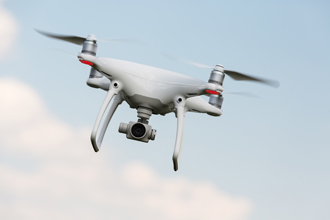Maryland Drone Pilot Training and Part 107 Test Info
Find drone training Maryland plus all the information that you need to get your Remote Pilot Certificate aka Drone License and fly drones commercially. The future is bright for the Unmanned Aircraft System industry as the demand for commercial drone pilots increases.
 On June 21, 2016, the FAA released its long awaited Part 107 to Title 14 of the Code of Federal Regulations (14CFR). These rules allow small unmanned aircraft systems (UAS) which are under 55 lbs to be flown commercially in the National Airspace System. On August 29, 2016 the new Part 107 rules became effective and you are now required to get a Remote Pilot Certificate with a small UAS Rating in order to legally fly drones for commercial or business purposes. To get this certificate, you must PASS the FAA Part 107 Remote Pilot aeronautical knowledge test.
On June 21, 2016, the FAA released its long awaited Part 107 to Title 14 of the Code of Federal Regulations (14CFR). These rules allow small unmanned aircraft systems (UAS) which are under 55 lbs to be flown commercially in the National Airspace System. On August 29, 2016 the new Part 107 rules became effective and you are now required to get a Remote Pilot Certificate with a small UAS Rating in order to legally fly drones for commercial or business purposes. To get this certificate, you must PASS the FAA Part 107 Remote Pilot aeronautical knowledge test.
Click here to find an FAA Part 107 test center location.
Please note: If you already have a Part 61 pilot certificate, you may only be required to take the online training course Part 107 small Unmanned Aircraft Systems (sUAS)ALC-451. All others can use this online course as a practice test.
To apply for your Remote Pilot Certificate aka drone license after passing the Part 107 knowledge test, click through to How Do I Become A Drone Pilot for your next steps.
Part 107 Knowledge Test Study Guide
The Federal Aviation Administration (FAA) has published a free Study Guide to help prepare you to take the Remote Pilot Certificate with an sUAS Rating Airman Knowledge Test. To download your free copy, click here.
Drone Training in Maryland:
Anne Arundel Community College
Arnold, MD
AACC is partnering with Consortiq to offer an online course that will prepare you with the knowledge that you need to take the FAA Part 107 exam. The cost: $257
Unmanned Aerial System Courses
AACC offers Introduction to Unmanned Aerial Systems where you will learn about FAA regulations regarding drones and explore military, civil and government uses including commercial and hobbyist operations.
Flying UAS/tech will give you hands-on experience with flying a quadcopter as well as training on a computer simulator. Also learn routine maintenance and go over the FAA regulations.
Anne Arundel Community College has also partnered with Sinclair College National UAS Training and Certification Center to offer you the following online courses:
UAS First Responder Leadership
Intro to UAS
UAS Precision Agriculture
UAS and the Law
Geospatial Information for UAS
Current State UAS Standard and Regulations
UAS Concept of Operations
UAS for Media Leadership
Looking for drone pilot training in a different state? Check out the map on our drone pilot schools page.
The opportunities for commercial drone pilots in Maryland are increasing every day. In Cecil County Maryland, drones helped detectives locate stolen construction equipment worth close to $500,000 that was hidden behind a barn in the woods. The images of the stolen equipment that the drone captured gave the sheriff’s department enough evidence to have a search warrant issued. Using a helicopter would have alerted the suspect and possibly given them time to hide or move the equipment.
The police drone pilots are using the drones to enforce fish and game regulations, crash investigations, search-and-rescue and they even helped locate an elderly patient with dementia that had wandered off. Also, using them for aerial security patrols at the county fair to make sure the visitors are safe.
The police drone pilots are flying Yuneec H520 and DJI Mavic drones and they use a mobile command center to control the drones.
UAV’s are also being tested by researchers at the University of Maryland who have conducted several test flights delivering a refrigerated kidney via drone in Baltimore. This research could pave the way for organ delivery by drone in the future.
Part 107 Highlights:
- You must be at least 16 years old.
- You must hold a Remote Pilot Certificate with a Small UAS Rating or be supervised directly by someone who does have this certificate.
- The drone must not weigh more than 55 lbs including any attached cargo.
- The UAS is not allowed to fly higher than 400 feet above the ground.
- The maximum speed allowed for the drone is 100 mph.
- The UAS needs to always be within the pilot’s line of sight without binoculars.Operation of the UAS is limited to daylight hours and during twilight hours only if the drone has anti-collision lights.
- You are not allowed to fly the drone over people who are not directly involved in the UAS operation.
- If the FAA requests your drone for inspection or testing, it must be made available with all records that are required under the new rule.
- Any UAS operation that causes a serious injury, loss of consciousness or property damage (not to the UAS) of at least $500 must be reported within 10 days to the FAA.
You can read the Summary of Part 107.
Read the complete Small UAS Rule here.
Drone Pilot Training Center is dedicated to providing the information that you need to become a successful drone pilot. Check back for updates at https://www.dronepilottrainingcenter.com for drone pilot license info.
Related Pages:
